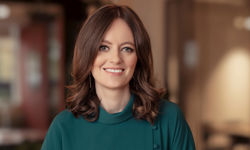The signs of pain at consumer publishers, as well as B2Bs, have multiplied since my last writing. Reductions in ad spend are the main culprit, although major jumps in paper and other costs, plus consumer cutbacks on discretionary spending (including magazines) certainly aren’t helping.
Declining ad spend
Some of the most recent stats:
* Total US ad spend increased by just 0.6% in this year’s first quarter, according to TNS Media Intelligence — particularly worrisome in a year that would normally get a substantial lift from US presidential elections and the Summer Olympics.
"After a hopeful start to the year, the pace of ad spending slowed perceptibly during March, and early figures from the second quarter indicate little immediate or sustained improvement in the core ad economy," summed up TNS SVP, research Jon Swallen.
* While publishers are among the media benefiting from continuing gains in internet spend (TNS reported net display advertising spend up 8.5% in Q1 ’08, versus Q1 ‘07), print spend for B2Bs continued its sustained decline (-3.2%) and consumer magazines were flat (+0.2%).
* Publishers Information Bureau data, reflecting about 85% of consumer magazine ad revenue, were even less upbeat for Q1, showing ad revenue down 1.2% and ad pages down 6.4%.
* Official single-copy sales data for the year thus far are not yet available, but the word on the street is that sales are "soft." Historically, "soft" has turned out to mean substantially down. Unit sales were flat last year (-0.2%), before the full impact of rising gas / food costs, unemployment and foreclosures on discretionary spending had been felt. And, while newsstand dollars rose 3% in ’07 thanks to cover price increases, more price hikes in the current climate would only serve to further depress units.
Casualties
Some of the results of these economic pressures during the past few weeks:
* More publishers announced layoffs. Reed Business Information cut 41 jobs. Penton Media cut 42. Meredith Corp cut 60 (20 within the magazine division) and is opting not to fill 60 vacant positions.
* IDG eliminated all circulation staff for three of its titles, PC World, MacWorld and GamePro, in favour of outsourcing.
* The long-predicted shakeout among newsweeklies as a result of internet impacts has partially occurred. Perennial third-runner US News & World Report — which saw its ad pages plummet by 33% between January and May (compared to -27% for Time and -24% for Newsweek) — is dropping to biweekly frequency as of 2009. (It was already down to 36 issues per year, from 46 in 2007.) The title will focus on less timely content, such as its well-read "best" lists (best hospitals, colleges, etc).
Although all three newsweeklies have been gaining web traffic, all three also have been losing newsstand sales and decreasing their rate bases, of course. Newsweek’s cost-reduction moves have included offering early retirement / buy-out packages, and Time Inc as a whole has made several rounds of job cuts over the past year or so.
* Due to insufficient advertising, BusinessWeek shut down its new regional magazine, BW Chicago, after eight issues.
Bright spots
Still, as always, there are bright spots. By delivering content that readers want in innovative ways, both in print and online, some magazine brands are doing just fine. A few examples:
* Magazines posting double-digit ad page gains during the first quarter included Women’s Health (+51%), Every Day with Rachel Ray (+38%), OK! (+38%), Guideposts (+37%), Men’s Journal (21%) and Parents (+19%). The three newer titles also saw huge circulation growth last year, while the older ones nicely held their own.
* The Economist’s North American edition saw ad pages rise more than 5% during the period, in part because of a 13% circulation gain in last year’s second half.
Another positive: according to Nielsen data, consumer magazine websites’ unique visitors rose by 11.9%, to 70.7 million, in the first quarter. Further, publishers continue to strive to innovate on the circulation marketing front:
* Hearst’s Good Housekeeping and Bonnier’s Parenting Group each just announced new rewards programmes that incentivise print subscriptions by enabling subscribers to earn up to 20% cash back when shopping on more than 200 online retailers.
* In September, Time Inc will launch a new, non-exclusive (other consumer publishers’ titles are included) online subscription service, Maghound. Members of the service will receive a set number of print magazine subscriptions for a monthly fee, with no term, and be able to switch magazine brands within their selections from month to month.
I’ll keep you posted on these and other fronts in the ongoing subscription and newsstand battles.
Meantime, with apologies to Winston Churchill, it’s KBO on this side of the pond.
FEATURE
A Few Bright Spots Amid Economy’s Growing Toll
As of mid-June 2008, the US government and economists continued to debate over whether the country is or is not heading into an official recession. Meanwhile, says Karlene Lukovitz, the fallout from the seriously troubled economy is, unfortunately, already abundantly evident in many sectors, including publishing.










